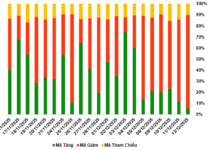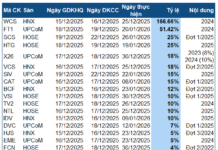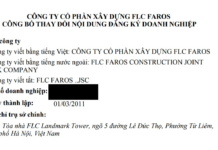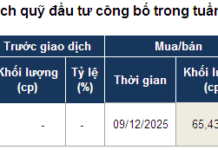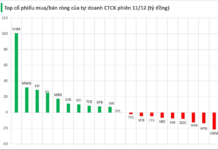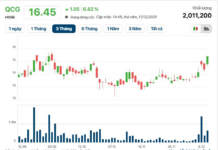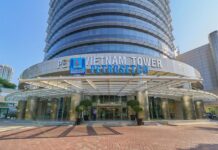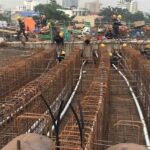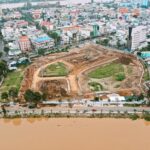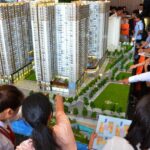Thousands of vacant relocation apartments
While many people are facing a housing shortage, thousands of apartments in relocation projects in Hanoi remain vacant , resulting in waste.
According to observations, on Khuyen Luong Street (Tran Phu Ward, Hoang Mai District), there are two 15-story relocation buildings with nearly 200 apartments that have been left unoccupied for years after the completion of their construction.

Two 15-story relocation buildings with nearly 200 apartments on Khuyen Luong Street (Tran Phu Ward, Hoang Mai District) have been left unoccupied for years.
Similarly, the Den Lu III relocation housing project (Hoang Mai District), completed in 2017, remains unused, with three buildings showing signs of deterioration.
Likewise, the N01-D17 relocation housing project, located at 1 Duy Tan Street (Cau Giay District), with an investment of VND 223 billion, commenced construction in 2010 and was expected to be completed by 2013. However, the project is yet to be operational, despite the completion of its structure.
According to the Hanoi Department of Construction, there are nine relocation projects in the area, comprising almost 2,500 apartments. Among these, two projects—the NO15,16 relocation housing in Thuong Thanh Ward (Long Bien District) and the construction of Buildings B and C in the Tran Phu Ward relocation area (Hoang Mai District)—have been completed and inspected but remain unoccupied, despite being allocated for relocation purposes.
Seven projects are currently under construction, including the Phu Dien relocation area in CT4 (Bac Tu Liem District), the N01 building in the D17 land lot in the new Cau Giay urban area, the B10/ODK3 land lot in Yen So Ward (Hoang Mai District), the Den Lu III new urban area (CT1, CT2, and CT3 buildings) in Hoang Mai District, the Xuan La relocation area in Tay Ho District (Building B), the CT1 and CT2 buildings in the Xuan La relocation area, and the A, B, C, and D buildings in the Tran Phu relocation area.
The city has allocated the entire housing fund from these projects for relocation purposes, especially for key projects requiring land clearance.
Proposal to auction surplus relocation apartments
According to the Department of Construction, there are several issues and obstacles regarding the relocation projects that have not been inspected and put into use.
In certain cases, apartments have been allocated to projects with land clearance, and the clearance and approval processes have been made public. However, due to delays or the preparatory phase of these projects, investors have not submitted requests for home sales decisions to the city.

The Hanoi Department of Construction has proposed to the People’s Committee a plan to auction off surplus relocation apartments to recoup investment costs.
Some projects were designed and constructed according to previous standards and regulations, but due to new fire protection and prevention requirements, they do not meet the conditions for inspection.
In other cases, projects have been designated as COVID-19 isolation, reception, and treatment facilities. The investors completed the necessary works and handed them over to the Hanoi Capital Command for pandemic control. However, these facilities have not been returned to the investors to complete the remaining works, conduct inspections, and meet the requirements for relocation as planned.
To address these issues and efficiently utilize the relocation apartments, the Department of Construction has proposed several solutions to the People’s Committee.
Firstly, they have requested that the People’s Committees of the districts where the projects are located and the municipal project management boards urgently coordinate with relevant departments, sectors, and units to implement procedures such as project adjustments, capital allocation, and reception after using the COVID-19 treatment facilities. The goal is to complete the construction and put the projects into use by the fourth quarter of 2024.
Additionally, they propose to intensify propaganda and encourage people to accept financial support to arrange for their relocation in land clearance projects in the city. For old apartment buildings, it is suggested that owners and users receive financial support to temporarily relocate during the renovation and reconstruction process, instead of the city providing temporary accommodation.
Notably, for the surplus relocation apartments that remain unoccupied after allocation, it is proposed to organize auctions to recoup the investment capital. For the two completed and operational projects, the city has assigned the Hanoi Housing Management Center, under the management of the Department of Construction, to sell the relocation apartments following regulations.
What are the 7 Provinces at the Bottom of the Public Investment Disbursement Ranking?
Despite being halfway through the year, seven localities in the country have disbursed less than 20% of their public investment capital. The provinces with the lowest disbursement rates nationwide are Binh Phuoc, Thai Binh, Ha Tinh, and Ca Mau, among others.
A $300 Million Lakeside Township Project by a Leading Real Estate Developer
Introducing the Sen Ho New Urban Area Project, a visionary endeavor valued at nearly 7 trillion VND. This ambitious undertaking is set to transform the landscape of Hung Yen province, offering a vibrant and modern community for its residents. With a sole investor registered to participate, this project promises a unique and exclusive development opportunity.




